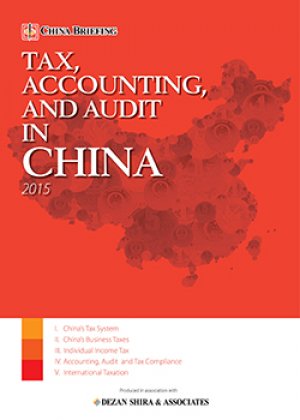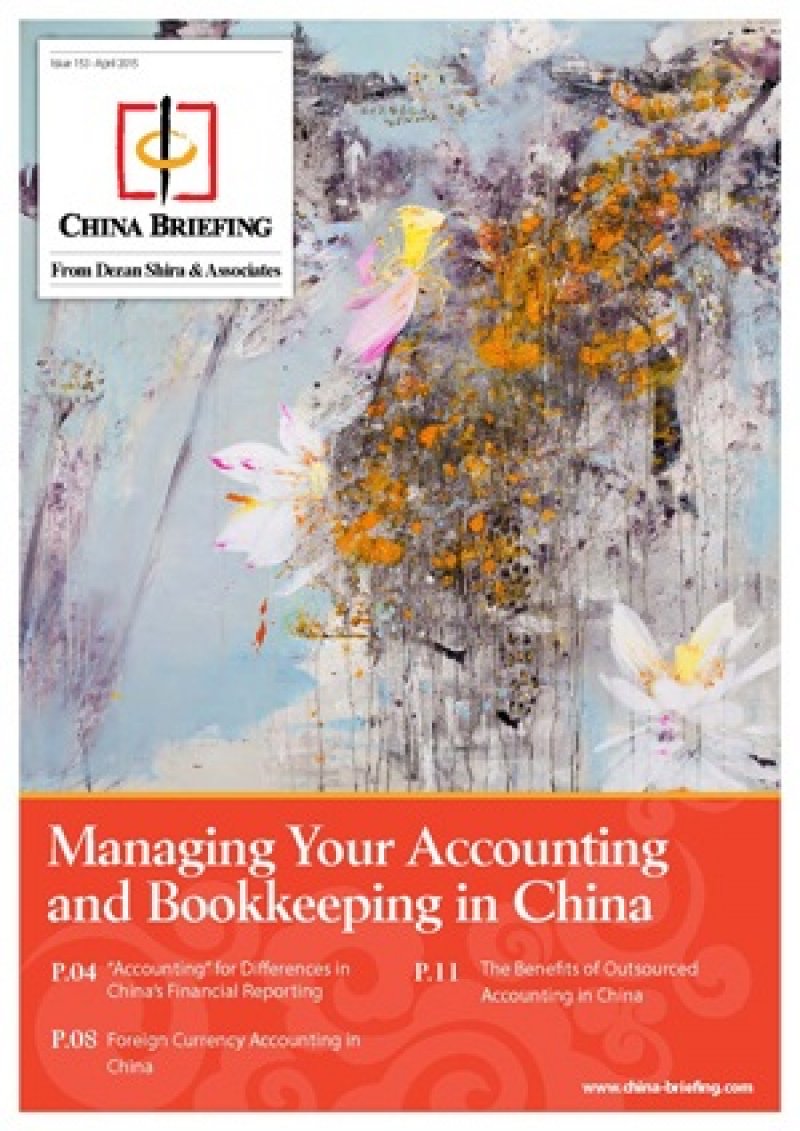Opportunities for FIEs in China’s High-Tech Sector
 By Dezan Shira & Associates
By Dezan Shira & Associates
Editor: Nathan Wakelin-King
Chinese policymakers and business leaders are aware of China’s need for a more innovative and technologically advanced economy. China’s policy response to this challenge has involved a mixture of tax incentives and the creation of industrial clusters for high-tech industry, along with some minor financial reforms.
A number of the policies for high-tech companies are relevant to foreign owned or foreign registered companies in China. Some policies (such as various tax measures) will directly affect foreign owned tech companies operating in China. Other effects will be more indirect, as they will help shape the trends in the Chinese domestic tech scene.
Registering as a high-tech Company
In China, a high-tech company is essentially a legal status that a company can be conferred. This entitles companies to certain benefits as part of China’s policy aim to improve domestic technological innovation.
From 2016, accreditation as a high-tech company has the following basic requirements:
- Fully or partly foreign owned companies are eligible, but the company must be registered in mainland China;
- Expenditure on technological product development proportional to at least four percent of revenue;
- The proportion of employees in the company actively engaged in R&D must be at least 10 percent of total company employees.
The requirements starting in 2016 are a loosening of previous laws – previously, there were specifications regarding the amount of staff members with technical qualifications. R&D staff also had to make up 30 percent of a company rather than 10 percent.
Given that “high-tech” status must be confirmed by various government bodies, this loosening of requirements will not likely create loopholes for non high-tech companies to claim tax reductions. Companies seeking to register as high-tech must liaise with three major government bodies: the ministry of science and technology, the ministry of finance, and the central taxation bureau.
![]() RELATED: Business Advisory Services from Dezan Shira & Associates
RELATED: Business Advisory Services from Dezan Shira & Associates
Tax Benefits for Technology Companies
Companies defined as high-tech receive the following benefits:
- A 15 percent corporate tax rate
- Staff training expenses incurred by the technology company that do not exceed eight percent of total wage expenditure are tax deductible. Training expenditure that exceeds 8 percent of total wages can be transferred and deducted in the following financial year
- From 2016 onwards, for R&D expenses incurred by an enterprise in its activities that do not form intangible assets, 50 percent of such research and development expenses can be deducted from taxable income
- For venture capital enterprises in a limited partnership that have invested in the form of equity in a non-listed high-tech SME for two years or more, its corporate partner may offset 70 percent of its investment against its taxable income from the said enterprise in the current year, as long as the venture capital enterprise has held the equity in the said enterprise for two years or more.
China’s National Innovation Demonstration Zones
The aim of the innovation zones is to provide a hub for technological innovation by linking academic research institutions, high-tech companies, and efficient sources of private and public finance. In theory, many of these policies are supposed to encourage the growth of technology SMEs, but in effect they are also the home of some of China’s biggest multinationals.
China’s National Innovation Zones are in the following locations:
- Zhongguancun, in Beijing
- Zhangjiang, near Shanghai
- Shenzhen
- Sunan, in Jiangsu. Specific zones are in Suzhou, Wuxi, Changzhou, Kunshan, Jiangyin, Wujin, and Zhengjiang industrial parks.
- Donghu, in Wuhan
- Binhai, in Tianjin
- Changzhutan in Hunan, made up of zones in Changsha, Zhuzhou, and Xiangtan.
- Xi’an technological park
From the perspective of a foreign owned company looking to invest in China in the future, the direct policy incentives to locate investments in a national innovation zone are not very clear. Partly this is due to a lack of information, but primarily this is because most of the tax incentives have been, or are being, rolled out to apply to the entire country.
Benefits of Investing in an Innovation Demonstration Zone
There remain some potential indirect benefits of investing in an innovation demonstration zone:
- Financing for Chinese partners: Chinese companies theoretically have easier access to financing if they are making investments in an innovation demonstration zone. This will not affect foreign owned or foreign registered companies directly, but it might if they are aiming for some sort of joint venture organization.
- The cluster effect: industries physically close together are often shown to grow faster due to ease of networking, and other effects.
- This networking effect will likely be especially important for companies whose business model relies on the internet. Given current trends of increasing government control and de facto segregation of the Chinese internet, relationships with Chinese e-commerce (and other internet based services) companies will be more important.
- Streamlined bureaucratic procedures: In theory, the government bodies with which a tech company interacts should all have a presence in these zones, making it quicker to cut red tape. In practice, it is difficult to verify if this makes a significant difference or not.
Overall, although some technology firms may find some usefulness in the Innovation Demonstration Zones, choosing to use them or not will not usually be a major factor in the investment decision.
Technological Innovation in China
China’s prominence in the world of science and technology is rising. One way of looking at this would be patents: in 2013, China filed more than any other country. Total investment in R&D went from US$30 billion in 2005 to over US$200 billion in 2014.
However, in spite of these number, Chinese patents are mostly low in quality, and a tiny percentage (less than five percent) are concurrently filed in the U.S. and Europe. In spite of the rapid growth of R&D spending in China, the measurable outcomes of this are not in line with the input.
Furthermore, analysis has shown that much successful innovation in China tends to be less related to scientific research and technology, and more related to non-scientific aspects of business, such as management efficiency, customer service, or product design. For example, Alibaba is an innovative internet-reliant company, but its innovations are not based around scientific breakthroughs.
From all of this we can conclude that although China is improving its situation in regards to science and technology, it still has a long way to go, creating a gap in the market for foreign high-tech companies to enter.
|
Asia Briefing Ltd. is a subsidiary of Dezan Shira & Associates. Dezan Shira is a specialist foreign direct investment practice, providing corporate establishment, business advisory, tax advisory and compliance, accounting, payroll, due diligence and financial review services to multinationals investing in China, Hong Kong, India, Vietnam, Singapore and the rest of ASEAN. For further information, please email china@dezshira.com or visit www.dezshira.com. Stay up to date with the latest business and investment trends in Asia by subscribing to our complimentary update service featuring news, commentary and regulatory insight. |
![]()
 Tax, Accounting, and Audit in China 2015
Tax, Accounting, and Audit in China 2015
This edition of Tax, Accounting, and Audit in China, updated for 2015, offers a comprehensive overview of the major taxes foreign investors are likely to encounter when establishing or operating a business in China, as well as other tax-relevant obligations. This concise, detailed, yet pragmatic guide is ideal for CFOs, compliance officers and heads of accounting who must navigate the complex tax and accounting landscape in China in order to effectively manage and strategically plan their China operations.
 Managing Your Accounting and Bookkeeping in China
Managing Your Accounting and Bookkeeping in China
In this issue of China Briefing, we discuss the difference between the International Financial Reporting Standards, and the accounting standards mandated by China’s Ministry of Finance. We also pay special attention to the role of foreign currency in accounting, both in remitting funds, and conversion. In an interview with Jenny Liao, Dezan Shira & Associates’ Senior Manager of Corporate Accounting Services in Shanghai, we outline some of the pros and cons of outsourcing one’s accounting function.
 Adapting Your China WFOE to Service China’s Consumers
Adapting Your China WFOE to Service China’s Consumers
In this issue of China Briefing Magazine, we look at the challenges posed to manufacturers amidst China’s rising labor costs and stricter environmental regulations. Manufacturing WFOEs in China should adapt by expanding their business scope to include distribution and determine suitable supply chain solutions. In this regard, we will take a look at the opportunities in China’s domestic consumer market and forecast the sectors that are set to boom in the coming years.
- Previous Article Annual Audit and Compliance in China 2016 – New Issue of China Briefing Magazine
- Next Article China’s Annual Audit and Compliance Requirements


























